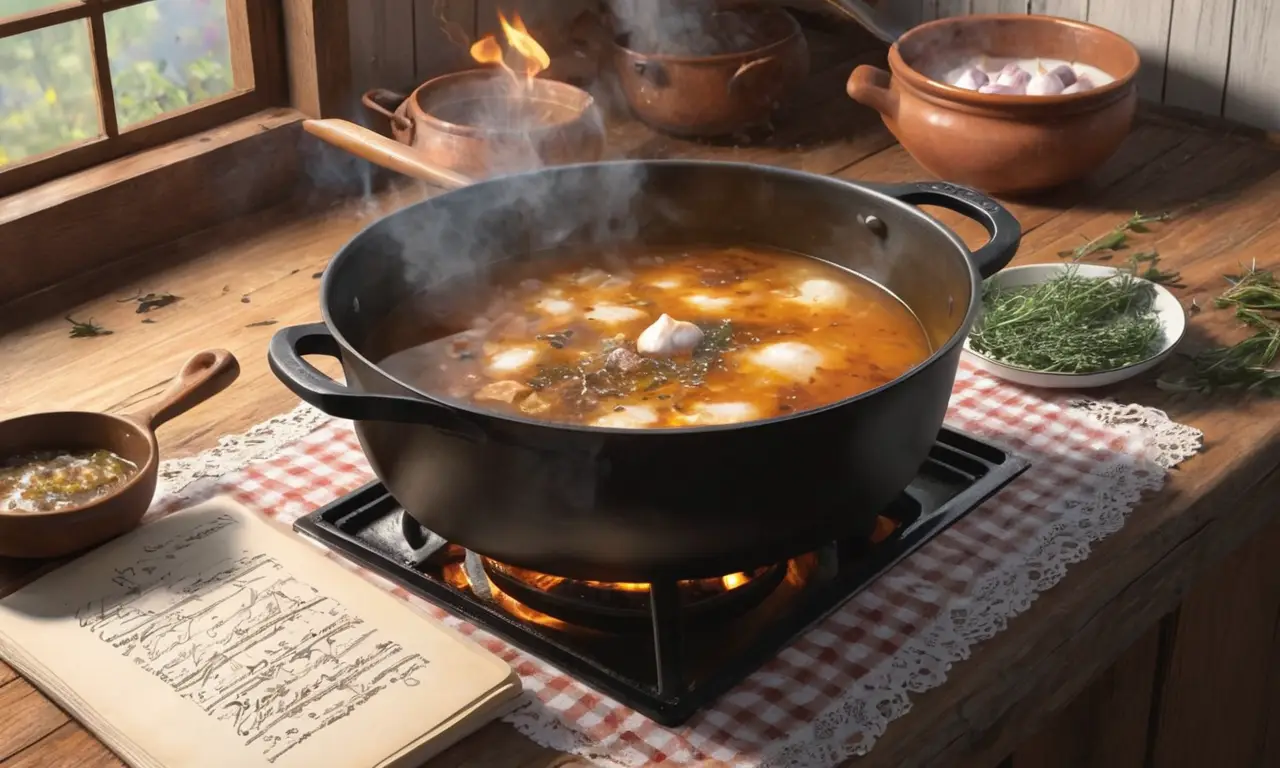
Simmering is a cooking technique that unlocks incredible depth and complexity in your dishes. It involves gently heating liquids to just below boiling point, creating the perfect environment for flavors to meld and intensify. Mastering simmering can elevate your soups, stews, sauces, and even grains to new heights of deliciousness.
This article will guide you through the nuances of simmering, exploring what it entails, how to achieve it on your stovetop, and the numerous benefits it offers. We’ll delve into specific recipes that showcase the magic of simmering and provide valuable tips to ensure perfect results every time.
What is Simmering?
Simmering is a gentle cooking method where liquids are heated just below boiling point. Imagine tiny bubbles gently rising to the surface, creating a soft, rolling motion rather than a vigorous boil. This subtle heat allows ingredients to cook slowly and evenly, extracting their flavors and aromas without becoming mushy or overcooked.
The temperature for simmering typically falls between 180°F (82°C) and 205°F (96°C). While it’s not a precise science, you can easily gauge if your liquid is simmering by observing the gentle bubbling. If the bubbles are large and rapidly breaking on the surface, you’re likely boiling.
Identifying Simmer vs. Boil
Simmering and boiling are often confused, but there are key differences. Boiling involves vigorous, rapid bubbling throughout the liquid, while simmering features a more subdued, rolling motion with smaller bubbles. Boiling cooks food faster, while simmering allows for slower, more gentle cooking that preserves delicate flavors and textures.
Stovetop Settings for Simmering

Finding the perfect simmer setting on your stove can seem daunting, but it’s simpler than you think. Most standard stovetops have a range of heat settings, typically numbered from 1 to 10. Simmering usually falls between medium-low and low heat, often represented by numbers 2 or 3 on the dial.
Remember that stovetop variations exist, so it’s essential to experiment and adjust the setting based on your specific appliance. Start with a lower setting and gradually increase the heat until you achieve the desired gentle bubbling.
Benefits of Simmering
Simmering offers numerous advantages over other cooking methods:
- Enhanced Flavor Development: The slow, gentle heat allows flavors to meld and intensify, creating richer, more complex dishes.
- Tenderizing Tough Cuts: Simmering breaks down tough connective tissues in meat and vegetables, resulting in tender, succulent results.
- Preserving Nutrients: Simmering cooks food at a lower temperature than boiling, helping to retain essential vitamins and minerals.
- Creating Thickened Sauces: The gentle evaporation of liquid during simmering helps thicken sauces naturally, eliminating the need for additional thickening agents.
Simmering Recipes

Simmering is incredibly versatile and can be used in a wide range of recipes:
- Soups and Stews: Simmering allows flavors to meld beautifully in hearty soups and stews, creating comforting and satisfying meals.
- Sauces: From creamy tomato sauces to rich gravy, simmering is essential for developing the depth and complexity of flavor in sauces.
- Braised Meats: Simmering tenderizes tough cuts of meat, resulting in succulent and flavorful braises.
Example Recipe: Classic Beef Stew
This simple beef stew recipe showcases the magic of simmering:
Ingredients:
* 1 lb beef chuck, cut into cubes
* 1 onion, chopped
* 2 carrots, chopped
* 2 celery stalks, chopped
* 4 cups beef broth
* 1 tbsp tomato paste
* 1 tsp dried thyme
* Salt and pepper to taste
Instructions:
1. Brown the beef cubes in a large pot over medium heat.
2. Add the onion, carrots, and celery and cook until softened.
3. Stir in the beef broth, tomato paste, thyme, salt, and pepper.
4. Bring to a simmer, then reduce heat to low and cover.
5. Simmer for 2-3 hours, or until the beef is tender.
Tips for Perfect Simmering
- Use a heavy-bottomed pot: This helps distribute heat evenly and prevent scorching.
- Don’t overcrowd the pot: Allow space for liquids to circulate freely.
- Stir occasionally: This prevents sticking and ensures even cooking.
- Adjust heat as needed: Monitor the simmering process and adjust the heat to maintain a gentle bubbling.
Conclusion
Mastering the art of simmering can transform your cooking experience. By understanding the nuances of this technique, you can unlock incredible flavor depth and create dishes that are both comforting and satisfying. Experiment with different recipes, embrace the slow-cooking magic, and enjoy the delicious results!
